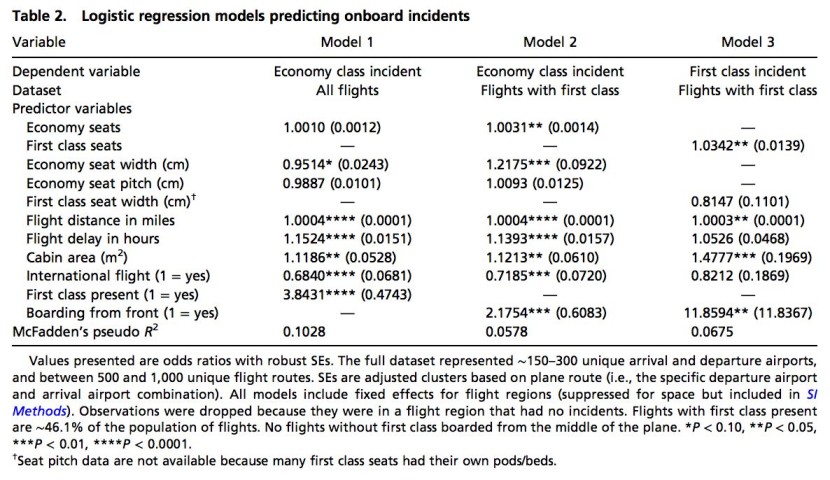
You might also like:
Air travel tends to bring out the worst in us — especially when you don’t have lounge access and are cramped into a middle seat at the rear of the plane. It could be a crying baby, a seat kicker or an overly chatty seatmate that really aggravates us most, but according to a new study, that isn’t usually the underlying cause for our frustrations. In fact, air rage is more likely to be triggered by the presence of a first-class cabin.
We use a complete set of all onboard air rage incidents over several years from a large, international airline to test our predictions. Physical inequality on airplanes—that is, the presence of a first class cabin—is associated with more frequent air rage incidents in economy class. Situational inequality—boarding from the front (requiring walking through the first class cabin) versus the middle of the plane—also significantly increases the odds of air rage in both economy and first class. We show that physical design that highlights inequality can trigger antisocial behavior on airplanes.
The NAS study found that the likelihood that a passenger would experience air rage was 3.84 greater when a first-class cabin was present, compared to when there was no first-class cabin at all. (Flight crews consider different types of outbursts to be air rage, including belligerent behavior, emotional outbursts, noncompliant behavior and incidents involving drugs, alcohol, smoking or sex.)
Meanwhile, economy passengers were 2.18 times more likely to have an incident when walking through the first-class cabin before making their way to an economy seat, compared to when passengers boarded from a center door, allowing passengers to enter the coach cabin directly. The reason? Research points to the psychology that when people feel a sense of deprivation and inequality, they’re more likely to act out — meaning more air rage. But, it’s hard to tell exactly how accurate these figures are, as the FAA doesn’t require flight crew to report incidents of air rage.
Additionally, the study is based on older data (from 2010) — it’s unclear how the results may have differed if based on data collected more recently. Here’s an explanation from NAS:
To test our predictions, we obtained a private database of all incidents of air rage from a large international airline over several years (circa 2010) of between 1 and 5 million flights. (We present a range to protect airline confidentiality.)
It’s not only economy passengers that don’t want to walk through the first-class cabin on the way to their seats — the study also found that there was a nearly 12-fold increase in the rate of air rage of first-class passengers when economy passengers had to walk through their cabin. The study cited that when people from higher-class backgrounds are made aware of their status, they’re more likely to be antisocial, less compassionate and have entitled attitudes.

It’s easy to see how a first-class cabin could cause some air rage, especially if you’re looking at some of the premium products like Singapore Suites, Lufthansa’s first class or Etihad’s Incredible A380 Apartment. Thankfully for all travelers involved, economy passengers typically don’t have to pass through those first-class cabins to get to their economy seats. And of course, other elements factor into an outburst of air rage, such as a slow boarding process, delayed itineraries and countless other reasons on board the aircraft — so it’s not entirely the fault of the first-class cabin.
Source: thepointsguy.com
